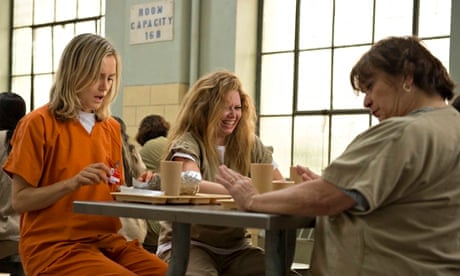When The Onion published Area Man Constantly Mentioning He Doesn't Own A Television in 2000 it could not have predicted that less than two decades later the once outlandish idea of cancelling one's cable/satellite TV subscription – now popularly known as cord-cutting – would not only be considered perfectly reasonable, but that owning a TV would no longer be needed either because most TV shows could be played on a PC, tablet or mobile phone instead.
Arguably the cornerstone of the cord-cutting revolution was set in 2007 when Netflix, after many years of being a successful DVD-by-mail rental service, launched the Watch Instantly streaming service in the United States. Since then, Netflix has become the global market leader in premium video streaming services, and in the last few years it has also expanded its business into original content programming (House of Cards, Orange Is the New Black) – thus further blurring the line between traditional broadcasters and streaming service providers. Amazon/LoveFilm, Apple, Hulu and many others have also jumped into the fray, further establishing cord-cutting as a feasible alternative to traditional broadcast television. Most recent market analysis reports have shown that cord-cutters, while still in a minority, are steadily on the rise. In fact, one of the reasons why the cord-cutting movement isn't growing as rapidly as it could is because many of the companies providing cable/satellite TV service are also the same ones providing internet service, creating a conflict of interests that has led service providers to bundle TV and internet services together in an attempt to discourage cord-cutters and save the bottom line. But evolution cannot be stopped.
Since the 1930s, when television was born as a mass medium, content production and distribution have always been closely related. Content intended for television distribution was scheduled to air in specific time slots regardless of whether it was produced live or recorded in advance, a concept known as live linear television. If you wanted to watch Seinfeld in the US in 1994, your only choice was to tune into a local NBC affiliate TV station every Thursday at 9 pm. Today's streamed video, on the other hand, can be viewed on demand, at any time, at any place, without needing to be pre-recorded or scheduled in any way. Video on-demand (VOD) services such as Netflix and Amazon are slowly and intentionally changing our viewing habits. Netflix has not only acknowledged binge watching as a trend among its customers, but moreover has fully embraced and leveraged it in the distribution of its own original programming. By making all episodes of its new series available at once, Netflix in one swift move changed 80 years of broadcast history and ushered in a new era in content production and distribution.
No longer is it necessary to wait a whole week until Thursday 9 pm to see the newest episode of your favourite TV show – now you can see it all at once, at a moment's notice.
While many broadcasters have attempted to replicate this experience by providing their own video on-demand and catch-up services, most customers prefer the à la carte model offered by companies such as Netflix and Amazon whose VOD catalogs indiscriminately provide access to a wide variety of TV and film content without time restrictions. One perhaps unintentional consequence of such content aggregation is that it effectively strips the content of its broadcast identity and thus eliminates the original broadcaster from the content distribution chain – at least from the customer's point of view.
For example, most fans of the animated series Archer who watch that show primarily via VOD are probably unaware that the show originally aired on FX Network on Mondays at 10 pm. And why should they know or care?
Without pre-produced shows to pad linear TV schedules, broadcasters are likely to increasingly rely on live news and sports to draw in audiences. But would broadcasting live events alone be enough to justify the cost of programming and distributing entire linear channels? In a future where most viewers get their content from aggregators such as Netflix and Amazon it might in fact be more financially viable for TV broadcasters to stay out of the distribution business altogether and focus on the part of the business they do best: content development, original programming and live event production. In a not-too-distant future a broadcaster such as the BBC might exist solely as a production company with no distribution infrastructure of its own, responsible only for producing news, scripted entertainment and live coverage of national sporting events – all streamed to your favourite device by some third-party content aggregation service.
It will possibly take another decade for cord-cutters to become the majority, but rest assured that the moment some Netflix-like service is able to offer us all our favourite TV shows, movies and live sports at any time, at any place, on any device – that is the moment we can begin sounding the death knell for live linear television. To the generation of children being born now, flipping TV channels will one day seem as foreign as rotary phone dialing.
Alex Zambelli is a Principal Product Manager at iStreamPlanet.
To get weekly news analysis, job alerts and event notifications direct to your inbox, sign up free for Media Network membership.
All Guardian Media Network content is editorially independent except for pieces labelled 'Advertisement feature'. Find out more here.

Comments (…)
Sign in or create your Guardian account to join the discussion